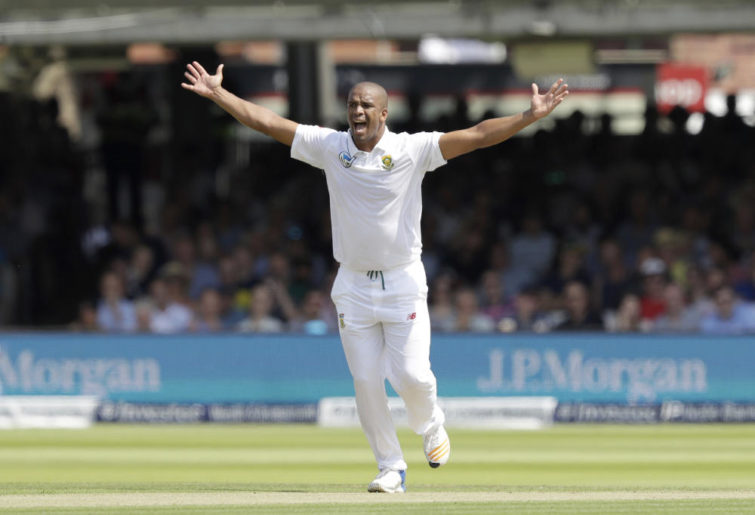This article is the second in a series ranking the cities and towns that have produced the best Test cricketers by birthplace.
The method of comparison was described in more detail in the first article.
In short, each city’s best ever team is rated according to the differential between its combined batting average and the combined runs scored against the bowlers (averaging their bowling averages and multiplying by ten).
Ninth and tenth places were taken by Johannesburg and Christchurch respectively, ahead of Kingston (Jamaica) and Leeds.
In the figures below, I’ve rounded batting averages up or down for simplicity.
Eighth place: London (population nine million)
Batting-bowling differential: +76
Graham Gooch – 118 Tests (1975-95), average 43 (Essex)
Mark Butcher – 71 Tests (1997-2004), average 35 (Surrey)
Denis Compton – 78 Tests (1937-57), average 50 (Middlesex)
Patsy Hendren – 51 Tests (1920-35), average 48 (Middlesex)
Phil Mead – 17 Tests (1911-1928), average 49 (Hampshire)
Mike Gatting – 79 Tests (1978-95), average 36 (Middlesex)
Alec Stewart (wicketkeeper) – 133 Tests (1990-2003), average 40 (Surrey)
Fred Titmus – 53 Tests (1955-75), 153 wickets at 32.2 (Middlesex)
Derek Underwood – 86 Tests (1966-82), 297 wickets at 25.8 (Kent)
Geoff Arnold – 34 Tests (1967-75), 115 wickets at 28.3 (Surrey)
John Lever – 21 Tests (1976-86), 71 wickets at 26.1 (Essex)
12th man: Godfrey Evans
Reserves: Raman Subba Row, Tich Freeman, John Emburey, Phil Tufnell, plus pre World War 1 stars CB Fry and George Lohmann
That Greater London only places eighth is a surprise for such a big city whose territory covers all or parts of four of England’s historically strongest county sides: Surrey, Middlesex, Kent and Essex.
A lot of those counties’ best players have come from towns or counties outside London, notably Reading (Ken Barrington, Peter May, Alec Bedser), Cambridge (Jack Hobbs and Tom Hayward) and Norfolk (John and Bill Edrich), or the north of England (Jim Laker and Bob Willis). While a lot of Test players have been born in London – at least seven teams’ worth – not many feature among the very elite or have played more than a handful of Tests.
If we prioritised wicketkeeping quality rather than batting averages for ranking purposes, Godfrey Evans would get the nod as keeper, dropping Mike Gatting and retaining Alec Stewart as a batsman. Stewart averaged nearly 47 when he didn’t keep, while Evans is regarded as one of England’s finest glovemen, second only to fellow Kent man Alan Knott.

Alec Stewart. (Photo by Getty Images)
This team’s batting is very good with the likes of Compton, Gooch and Hendren. The pace bowling isn’t strong in depth, and Arnold’s and Lever’s averages arguably flatter players who were in and out of the side a lot. The best ever London-born seamer might be George Lohmann, who took 112 wickets between 1886-96 at the astonishing average of 10.8, but that era falls outside our period for comparison.
“Deadly” Derek Underwood is the standout bowler. According to the retrospective ICC rankings, he was ranked the number one Test bowler in the world for four years from September 1969 to August 1973.
Seventh place: Perth (population 2.1 million)
Batting-bowling differential: +94
Bruce Laird – 21 Tests (1979-82), average 35
Justin Langer – 105 Tests (1993-2007), average 45
Simon Katich – 51 Tests (2001-10), average 45
Mike Hussey – 79 Tests (2005-13), average 52
Ross Edwards – 20 Tests (1972-75), average 40
Adam Voges – 20 Tests average (2015-16), 62
Rod Marsh (wicketkeeper, captain) – 96 Tests (1970-84), average 27
Graham McKenzie – 60 Tests (1961-71), 246 wickets at 29.8
Dennis Lillee – 70 Tests (1971-84), 355 wickets at 23.9
Stuart MacGill – 44 Tests (1998-2008), 208 wickets at 29
Bruce Reid – 27 Tests (1985-92), 113 wickets at 24.6
12th man: Terry Alderman
Reserves: Damien Fleming, Bruce Yardley, Mitch Marsh, Graham Wood, Bob Massie, Terry Jenner
This Perth-born team is stacked with big names from the relatively recent past. It overlaps in large part with the best ever WA State of Origin side. The probable exceptions are Damien Martyn (born in Darwin, but moved to Perth aged three) and Chris Rogers (born in Sydney but schooled in Perth), who would come in for Laird and Edwards.
Perth would be much further ahead of London (with a +94 differential) if we included Damien Fleming, given his superior bowling and batting averages. But I’m guessing Sandgropers would prefer to show they can still outrank London while including a WA homegrown legend in Garth McKenzie, given Fleming moved at an early age to Melbourne and represented Victoria.
Perth’s second XI bowling with Alderman, Fleming, Bruce Yardley and Bob Massie would be a match for many city dream teams. Laurie Mayne, Mick Malone, Wayne Clark, Jo Angel and Sam Gannon are other Perth-born quicks who have played for Australia.

Lillee and Marsh are both Perth products. (PA Images via Getty Images)
The domination of Perth-born players in WA teams reflects the proportion of the state’s population that live there. The most notable players born in regional WA I came across are Kim Hughes (Margaret River, but in Perth for high school), Geoff and Shaun Marsh (Narrogin), and Len Pascoe (Bridgetown, moved to Sydney as a child).
Various sources suggest Subiaco is the number one birthplace for cricketers in Perth, witnessing the entry into the world of Lillee, Langer, Alderman, Voges, Massie and John Inverarity. I guess there is a hospital there?
Sixth place: Cape Town (population 4.5 million)
Batting-bowling differential: +105
Herschelle Gibbs – 90 Tests (1996-2008), average 42
Gary Kirsten (captain) – 101 Tests (1993-2004), average 45
Jonathan Trott (England) – 50 Tests (2009-15), average 44
Jacques Kallis – 166 Tests (1995-213), average 55, 292 wickets at 32.7
Basil D’Oliveira (England) – 40 Tests (1966-72), average 40
Andy Flower (wicketkeeper) (Zimbabwe) – 63 Tests (1992-2002), average 52
JP Duminy – 46 Tests (2008-17), average 33
Vernon Philander – 64 Tests (2011-20), 224 wickets at 22.3
Craig Matthews – 18 Tests (1992-95), 52 wickets at 28.9
Paul Adams – 45 Tests (1995-2004), 132 wickets at 32.9
Neil Adcock – 26 Tests (1953-62), 104 wickets at 21.1
12th man: Temba Bavuma
Reserves: Clive van Ryneveld, Jack Cheetham (SA captain 1952-55)
Honourable mention: Garth Le Roux (838 first-class wickets at 21.2)
Three Cape Town-born players went on to play for countries other than South Africa. Andy Flower’s family came from Zimbabwe and returned there when he was in primary school. He went on to become the country’s finest ever player and had two brief stints as captain, but we’ve given the reins here to Gary Kirsten, who had success as coach with India (2011 World Cup) and South Africa.
Jonathan Trott grew up in Cape Town and played a couple of seasons of first-class cricket for Boland and Western Province before moving to England, where his UK-born father and passport qualified him for Test selection.
Basil D’Oliveira left South Africa aged 29 because apartheid policies excluded him from first-class or Test cricket, despite displaying prodigious talent in local segregated cricket. He had minimal experience on grass before moving to England and finally made the Test side aged 35. With earlier opportunities he might have been talked about in the same vein as the likes of Jacques Kallis.
The era of anti-apartheid boycotts was given a big push by the D’Oliveira affair in 1968 when England called off a planned tour to South Africa after the Vorster government refused to accept D’Oliveira’s inclusion on the team.
The bowling is led by Vernon Philander, whose record on seaming wickets in South Africa, England and New Zealand over the last decade (and once in Hobart) has been second to none. A less well known great from Cape Town was Neil Adcock, who spearheaded the Springbok attack with great effect in the 1950s, but didn’t play many Tests due to South Africa’s limited fixture list.

Vernon Philander. (AP Photo/Matt Dunham)
Garth Le Roux was a Cape Town product who would walk into this team if his stellar first-class career hadn’t coincided with the years of international isolation. Le Roux gave a glimpse of his abilities in World Series Cricket in 1978-79: he took 17 wickets at 16 for the World XI in three Super Tests, including a match-winning 9-101 in the final against Australia and a crazy average of 13 in nine one-day matches, including one haul of 5-6 off six overs against Australia at the Gabba.
Fifth place: Lahore (population 11 million)
Batting-bowling differential: +125
Azhar Ali – 78 Tests (2010-), average 43
Saleem Malik – 103 Tests (1982-99), average 44
Mohammad Yousuf – 90 Tests (1998-2010), average 52
Babar Azam – 26 Tests (2016-), average 45
Taufeeq Umar – 43 Tests (2001-14), average 39
Mudassar Nazar – 76 Tests (1976-89), average 38, 66 wickets at 38.3
Imran Khan (captain) – 88 Tests (1971-92), average 38, 362 wickets at 22.8
Kamran Akmal (wicketkeeper) – 53 Tests (2002-10), average 31
Wasim Akram – 104 Tests (1985-2002), 414 wickets at 23.6
Saqlain Mushtaq – 49 Tests (1995-2004), 208 wickets at 29.8
Fazal Mahmood – 34 Tests (1952-62), 139 wickets at 24.7
12th man: Abdul Qadir (1977-90)
Reserves: Aamer Sohail, Sarfraz Nawaz, Umar Akmal, Wahab Riaz
Most of the players here represented one of the Lahore first-class teams (variously named Greens and Whites). The main exceptions are Mohammad Yousuf, one of Pakistan’s greatest batsmen, who first played for Bahawalpur, plus Babar Azam and Saqlain Mushtaq, who played for Islamabad and other sides.
Lahore boasts one of the best bowling attacks of any city, perhaps the very best. While Wasim Akram has backers for inclusion in best-ever world Test teams, Imran’s record is arguably just as good in terms of wickets per Test and average.
And perhaps no-one has surpassed the all-round record over a single decade that Imran achieved from 1980 to 1989 – a bowling average of 19.1 while batting at 44.2. As he is now prime minister, it will be hard to wrest the captaincy from him.

Imran Khan. (Asad Zaidi/Bloomberg via Getty Images)
The batting is led by Yousuf, one of Pakistan’s greatest batsmen, and its two current leading Test players, Babar Azam and Azhar Ali. Some might prefer leg-spinning great Abdul Qadir, with 236 wickets at 32.8, over off-spinner Saqlain Mushtaq, but Saqlain’s lower average gets him the nod.
Karachi, Pakistan’s largest city, is the only other birthplace in the country that can muster a full team of well established Test players, although Rawalpindi and Peshawar each boast several good players. Karachi’s leading lights are Javed Miandad, Saeed Anwar, Shoaib Mohammad and Iqbal Qasim, but its thin pace-bowling stocks means it ranks far behind Lahore.
Next time: the top four places.

































































































